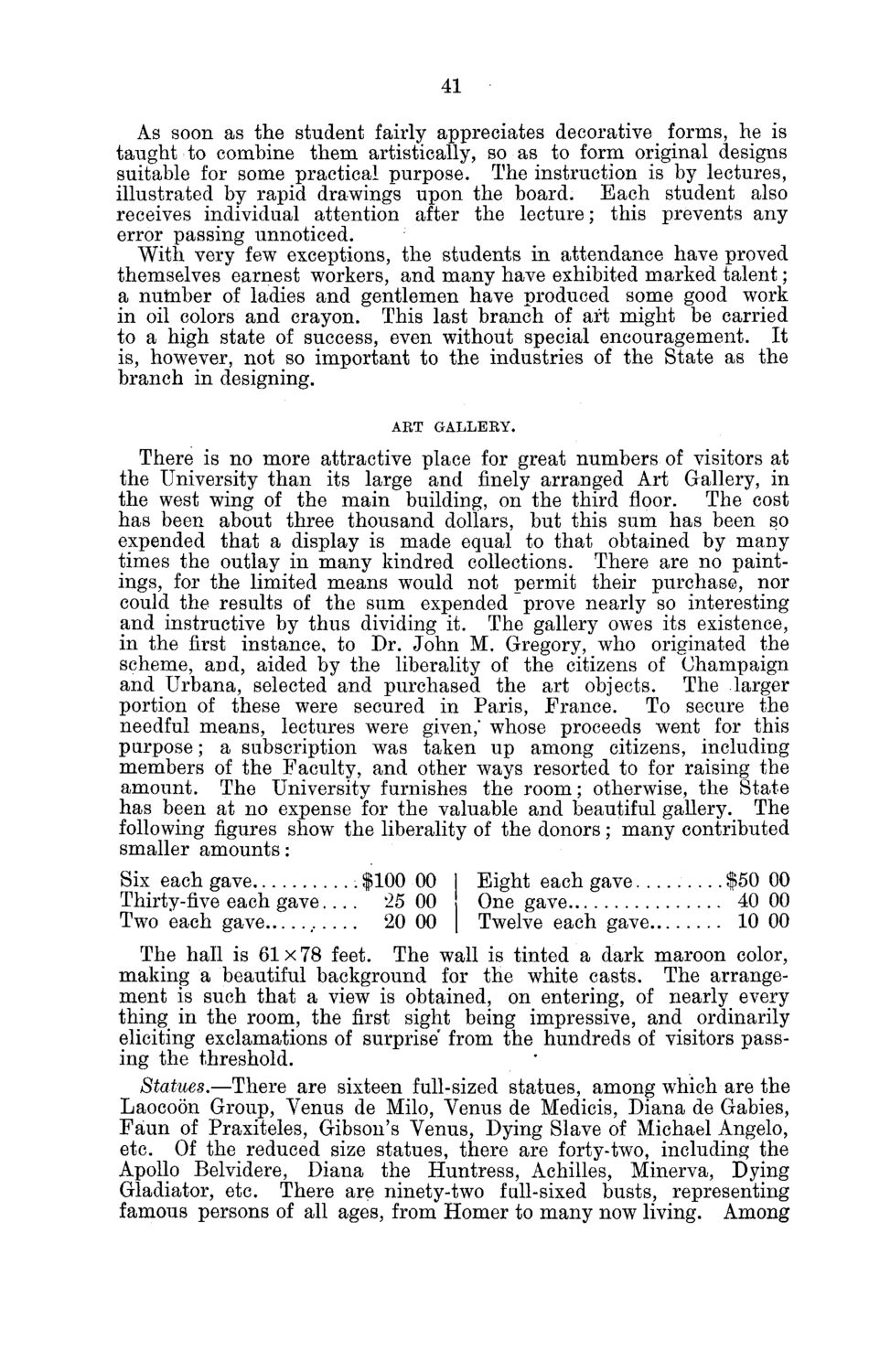| |
| |
Caption: Board of Trustees Minutes - 1880
This is a reduced-resolution page image for fast online browsing.

EXTRACTED TEXT FROM PAGE:
41 As soon as the student fairly appreciates decorative forms, he is taught to combine them artistically, so as to form original designs suitable for some practical purpose. The instruction is by lectures, illustrated by rapid drawings upon the board. Each student also receives individual attention after the lecture; this prevents any error passing unnoticed. With very few exceptions, the students in attendance have proved themselves earnest workers, and many have exhibited marked talent; a nuinber of ladies and gentlemen have produced some good work in oil colors and crayon. This last branch of aft might be carried to a high state of success, even without special encouragement. It is, however, not so important to the industries of the State as the branch in designing. ART GALLERY. There is no more attractive place for great numbers of visitors at the University than its large and finely arranged Art Gallery, in the west wing of the main building, on the third floor. The cost has been about three thousand dollars, but this sum has been so expended that a display is made equal to that obtained by many times the outlay in many kindred collections. There are no paintings, for the limited means would not permit their purchase, nor could the results of the sum expended prove nearly so interesting and instructive by thus dividing it. The gallery owes its existence, in the first instance, to Dr. John M. Gregory, who originated the scheme, and, aided by the liberality of the citizens of Champaign and Urbana, selected and purchased the art objects. The larger portion of these were secured in Paris, Prance. To secure the needful means, lectures were given,' whose proceeds went for this purpose; a subscription was taken up among citizens, including members of the Faculty, and other ways resorted to for raising the amount. The University furnishes the room; otherwise, the State has been at no expense for the valuable and beautiful gallery. The following figures show the liberality of the donors; many contributed smaller amounts: Six each gave $100 00 I Eight each gave Thirty-five each g a v e . . . . 25 00 One gave Two each gave 20 00 | Twelve each gave $50 00 40 00 10 00 The hall is 61x78 feet. The wall is tinted a dark maroon color, making a beautiful background for the white casts. The arrangement is such that a view is obtained, on entering, of nearly every thing in the room, the first sight being impressive, and ordinarily eliciting exclamations of surprise* from the hundreds of visitors passing the threshold. Statues.—There are sixteen full-sized statues, among which are the Laocoon Group, Venus de Milo, Venus de Medicis, Diana de Gabies, Faun of Praxiteles, Gibson's Venus, Dying Slave of Michael Angelo, etc. Of the reduced size statues, there are forty-two, including the Apollo Belvidere, Diana the Huntress, Achilles, Minerva, Dying Gladiator, etc. There are ninety-two full-sixed busts, representing famous persons of all ages, from Homer to many now living. Among
| |